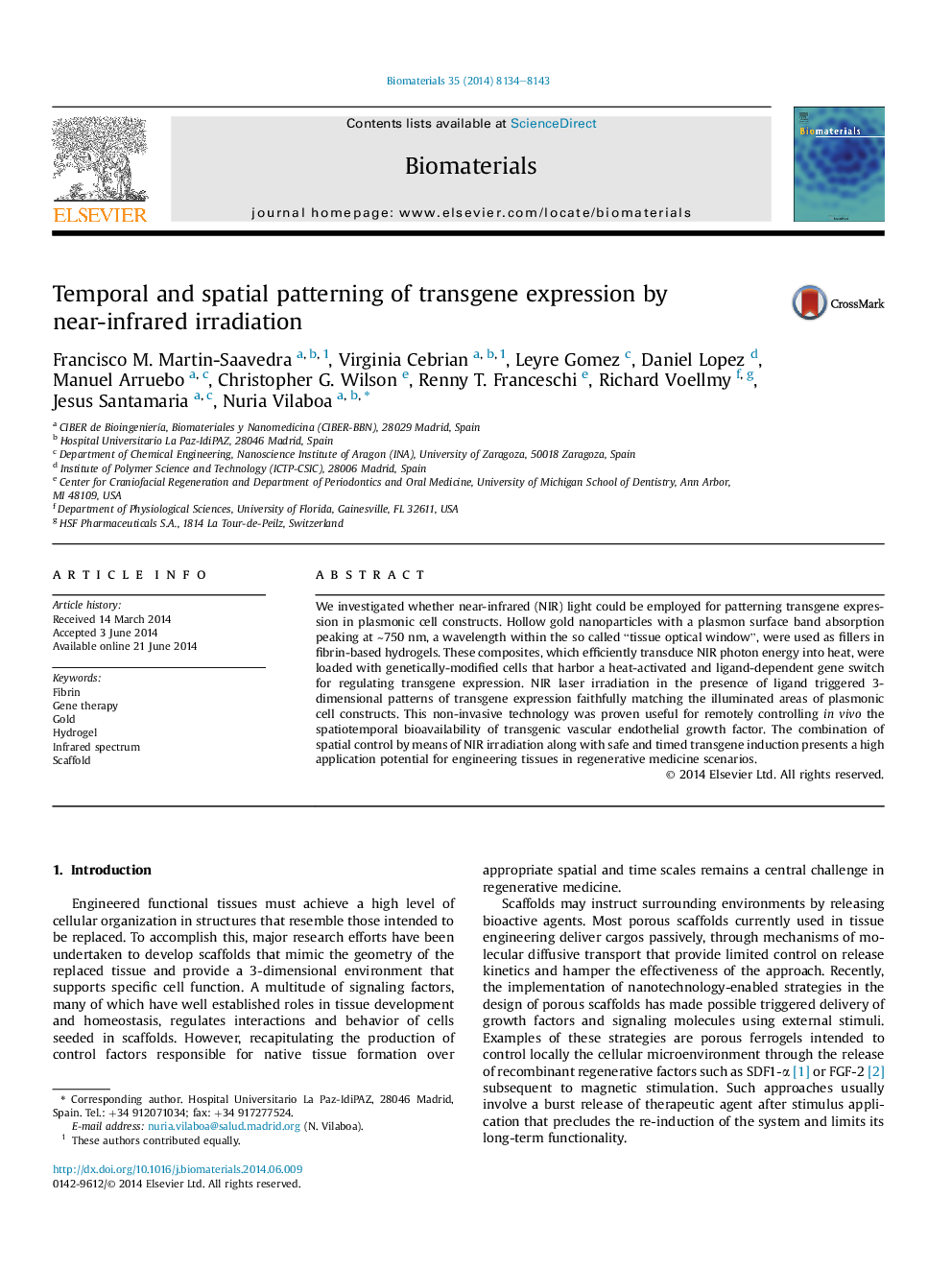| Article ID | Journal | Published Year | Pages | File Type |
|---|---|---|---|---|
| 5896 | Biomaterials | 2014 | 10 Pages |
We investigated whether near-infrared (NIR) light could be employed for patterning transgene expression in plasmonic cell constructs. Hollow gold nanoparticles with a plasmon surface band absorption peaking at ∼750 nm, a wavelength within the so called “tissue optical window”, were used as fillers in fibrin-based hydrogels. These composites, which efficiently transduce NIR photon energy into heat, were loaded with genetically-modified cells that harbor a heat-activated and ligand-dependent gene switch for regulating transgene expression. NIR laser irradiation in the presence of ligand triggered 3-dimensional patterns of transgene expression faithfully matching the illuminated areas of plasmonic cell constructs. This non-invasive technology was proven useful for remotely controlling in vivo the spatiotemporal bioavailability of transgenic vascular endothelial growth factor. The combination of spatial control by means of NIR irradiation along with safe and timed transgene induction presents a high application potential for engineering tissues in regenerative medicine scenarios.
